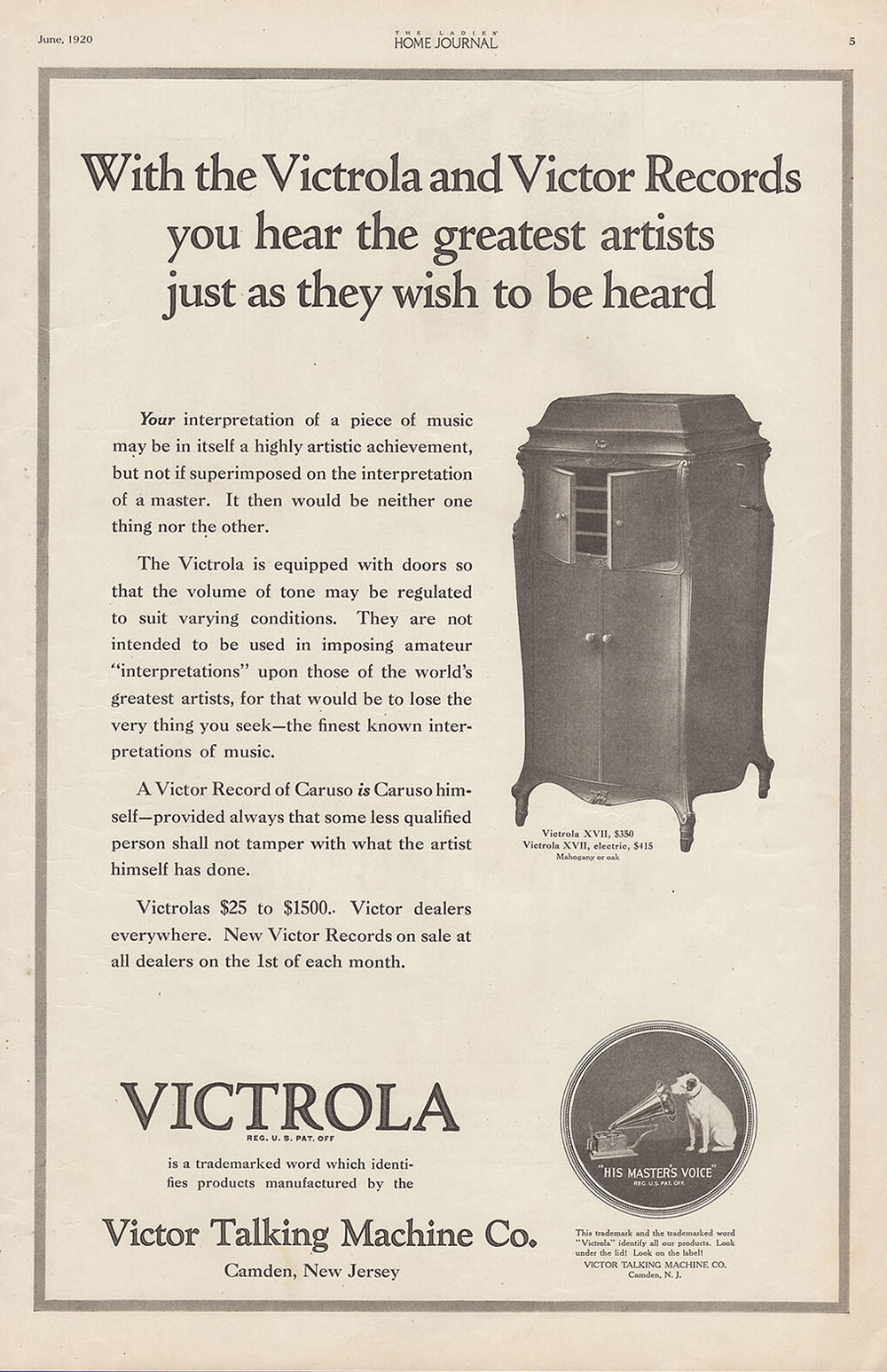|
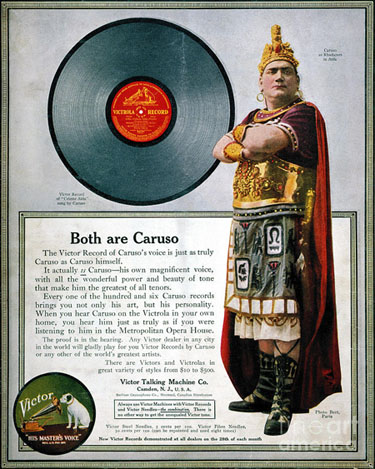
.
The accuracy; realism; fidelity of sound;
true to life; same as the original -- these were some of the words
and themes in many early phonograph advertisements that wanted to
assure consumers that what you were purchasing was "just as truly"
the artist as the artist him or herself.
In 1914 to 1916 an ad campaign by Victor
showed the picture of a Victor Record next to an Opera Star and then
the phrase "Both are "and then name of the Opera Star",
e.g., "Both are Caruso," "Both are Schumann-Heink,"
"Both are Farrar," etc.
The Victor's "Which is which?"
ad campaign a few years earlier wanted consumers to think about whether
they could really tell the difference. between live and recordings.
The "Both are" campaign, however, was more definitive: "It
actually is Caruso..." Buy his record and "in
your own home, you hear him just as truly as if you were listening
to him in the Metropolitan Opera House."
..
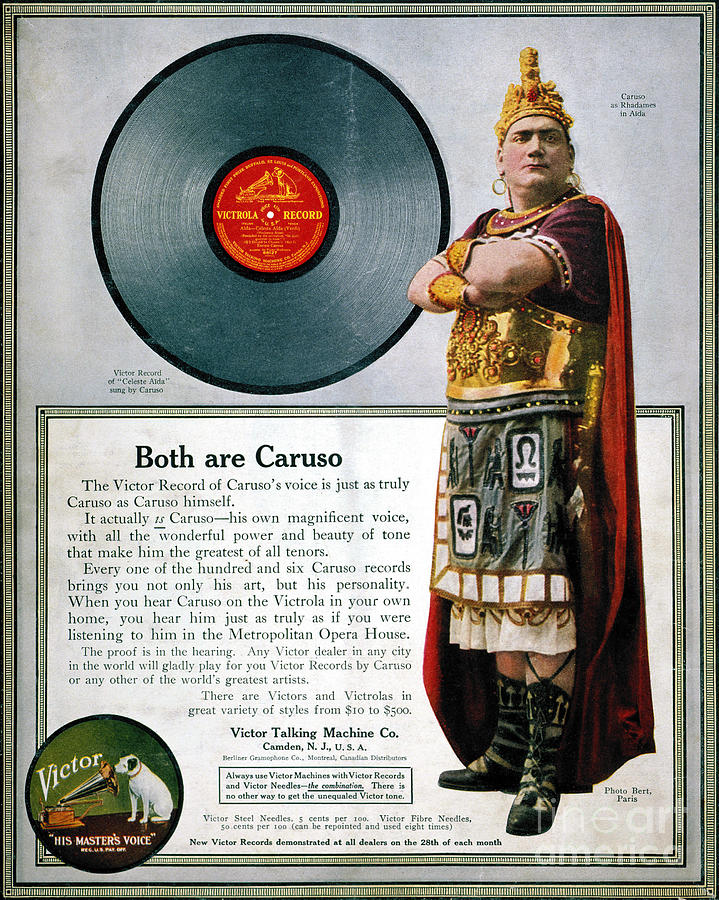
1914
.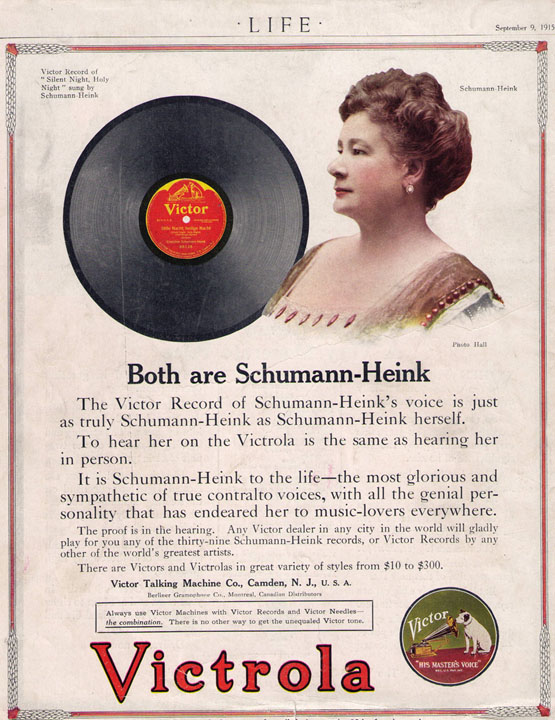
Life, September
9, 1915
.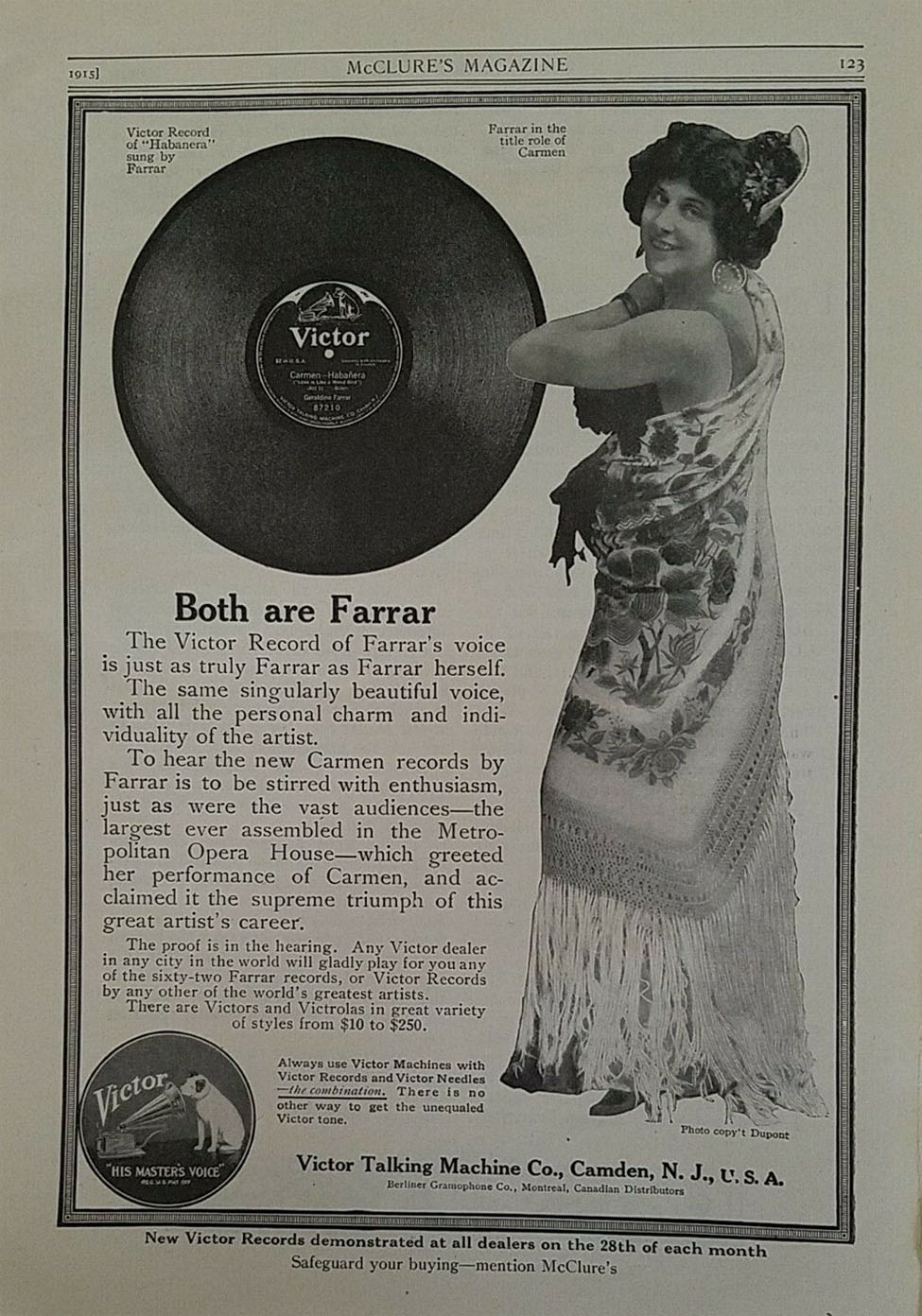
Both are Farrar, McClure's
Magazine, 1915.
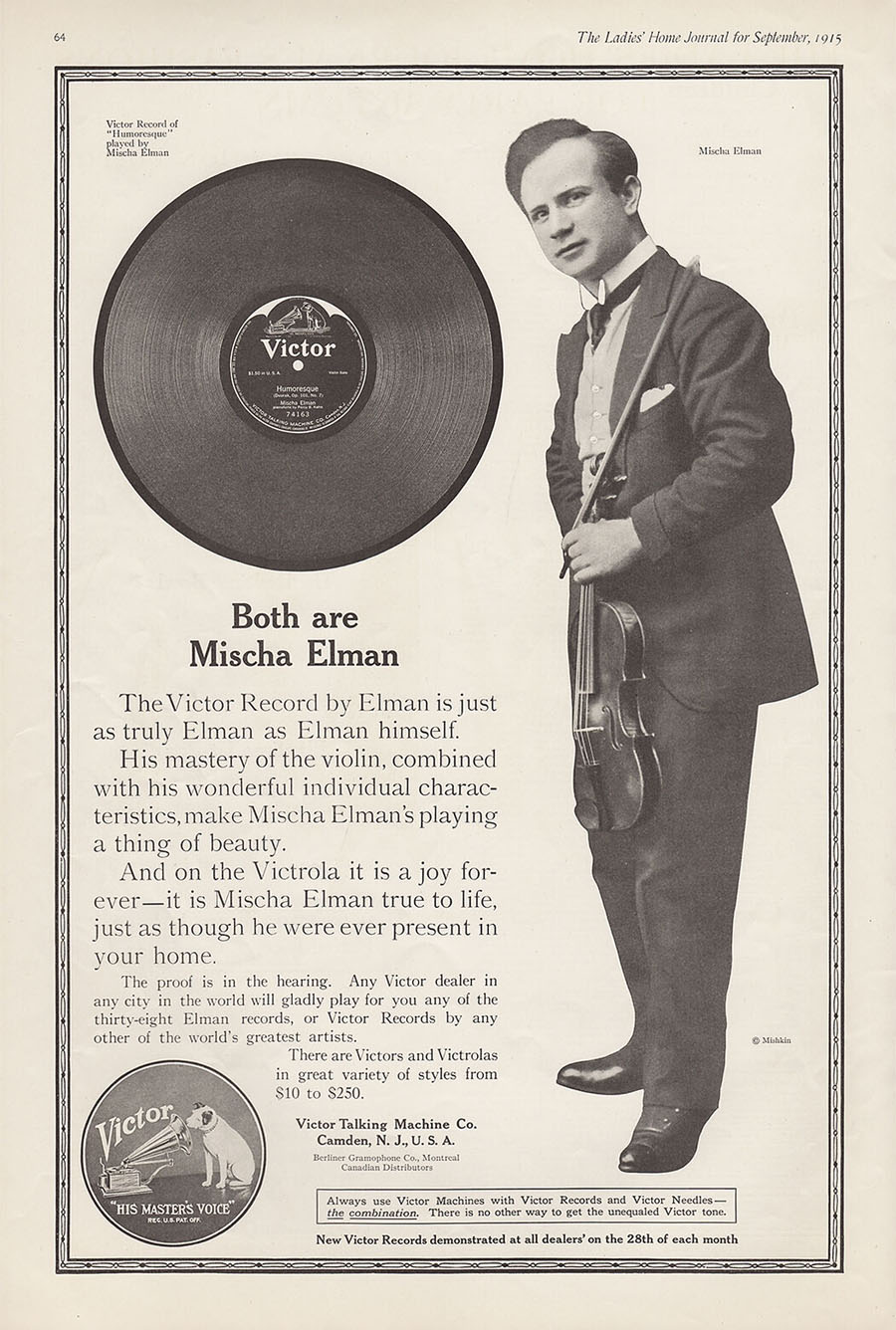
The Ladies' Home Journal
for September, 1915
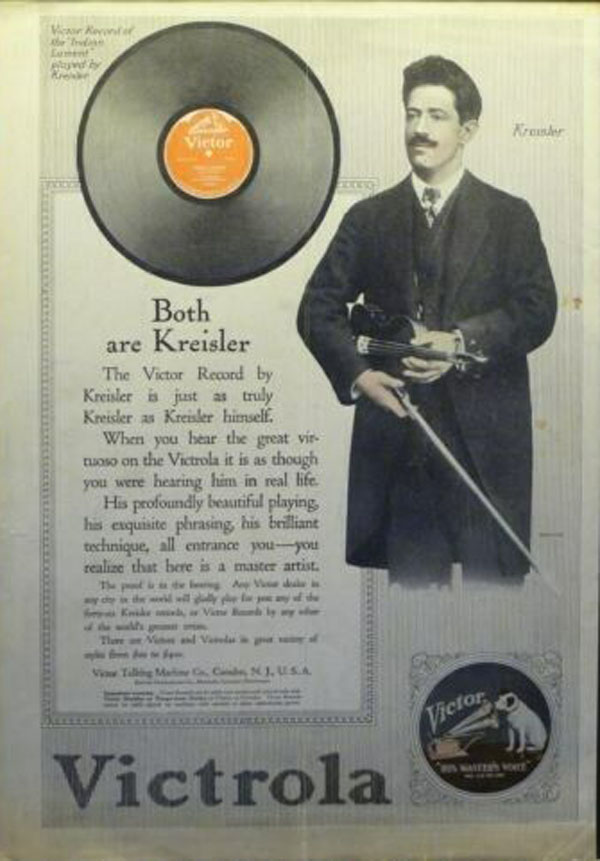
1916
In 1927 Kreisler would appear in another
Victrola ad with the same theme - "Kreisler is actually Kreisler
on the New Orthophonic Victrola."
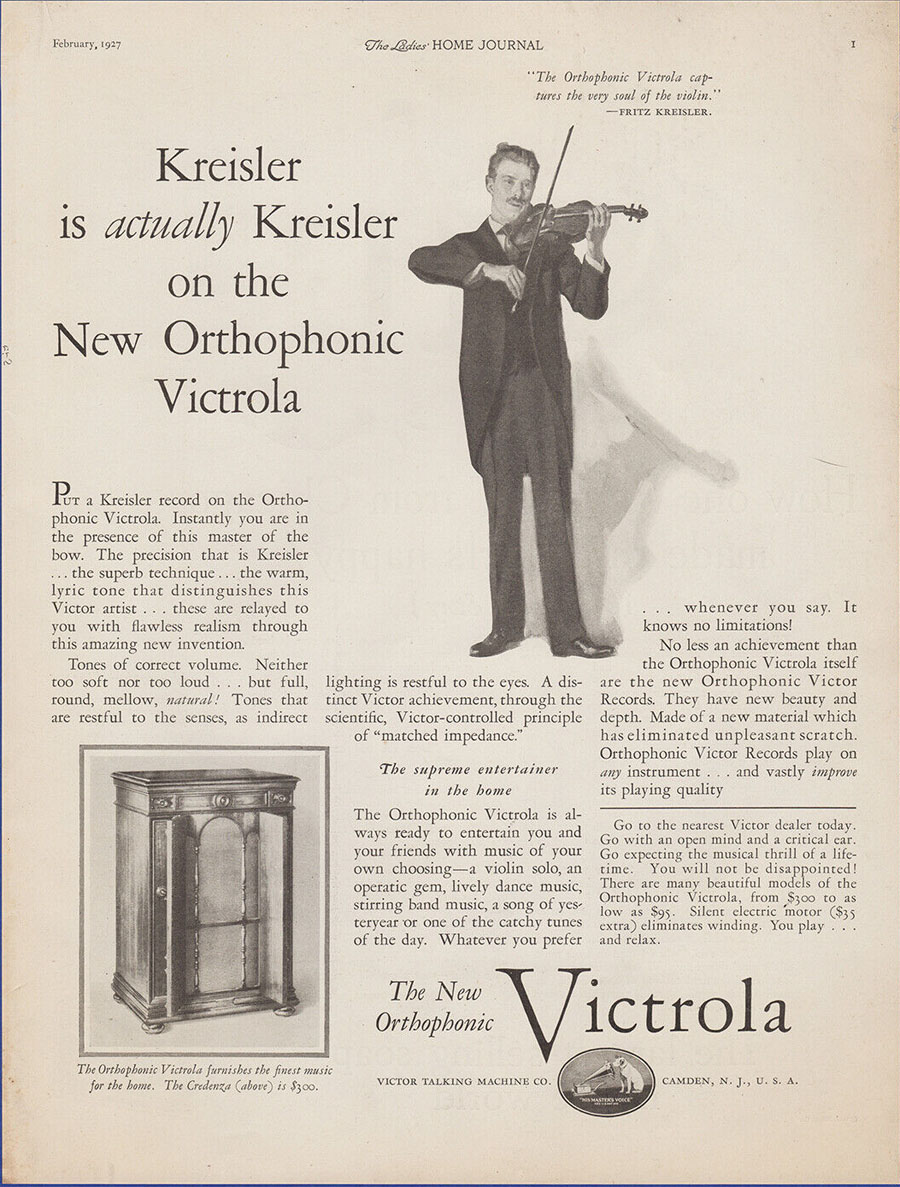
The Ladies' Home Journal,
February 1927
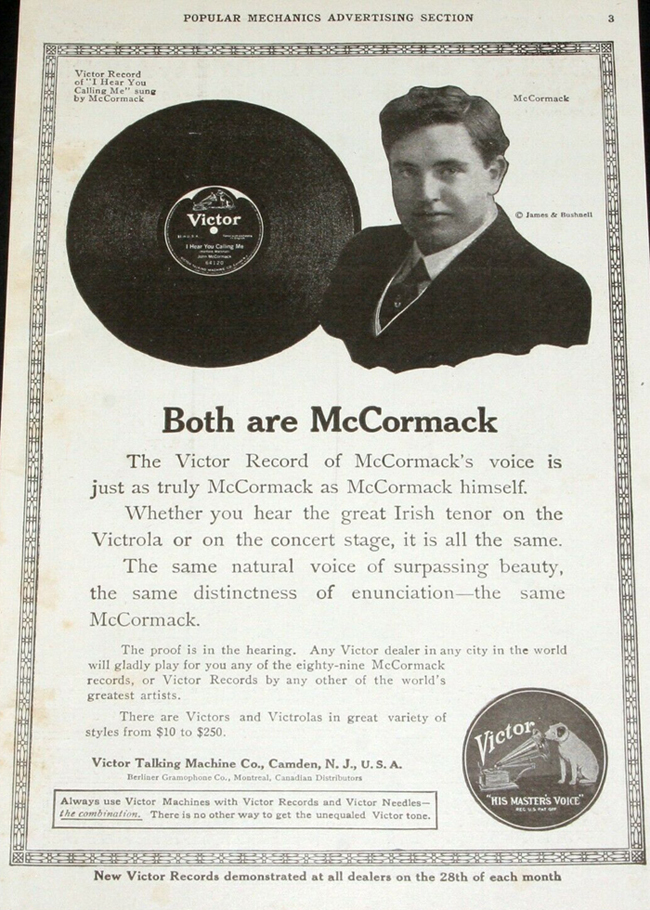
1915
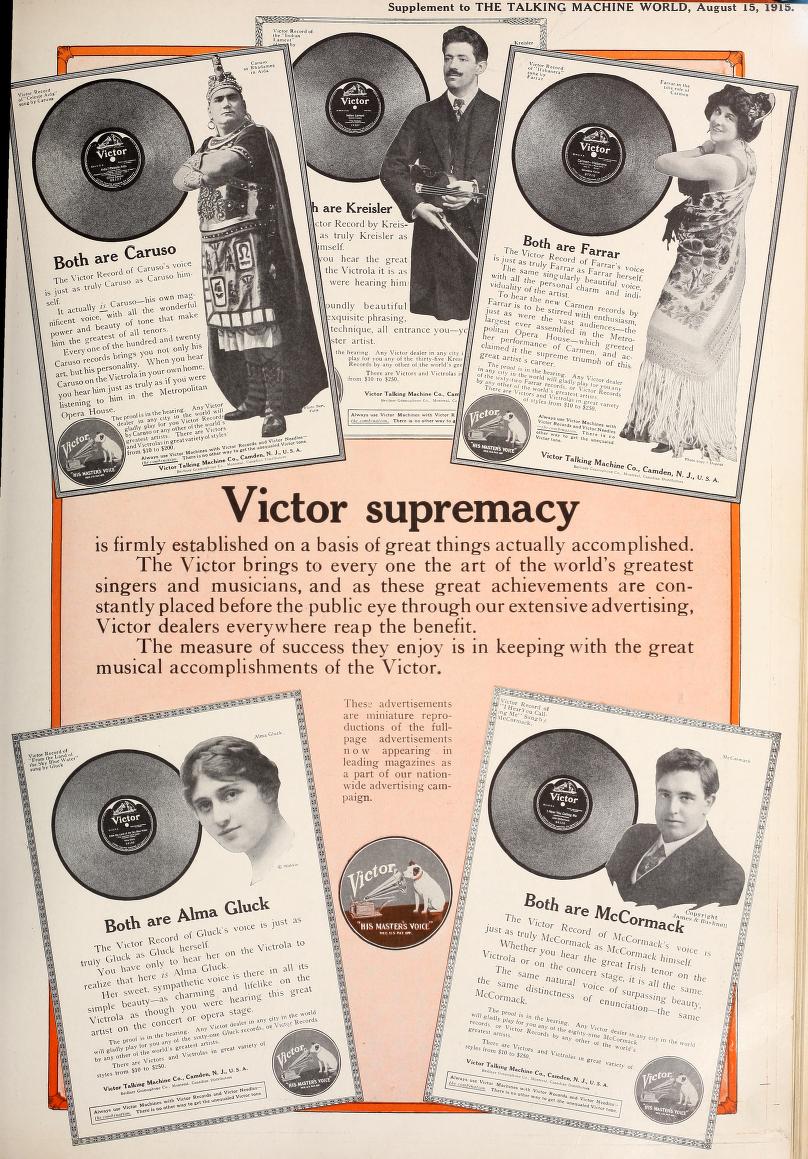
Victor supremacy,
The Talking Machine World, August 1915.
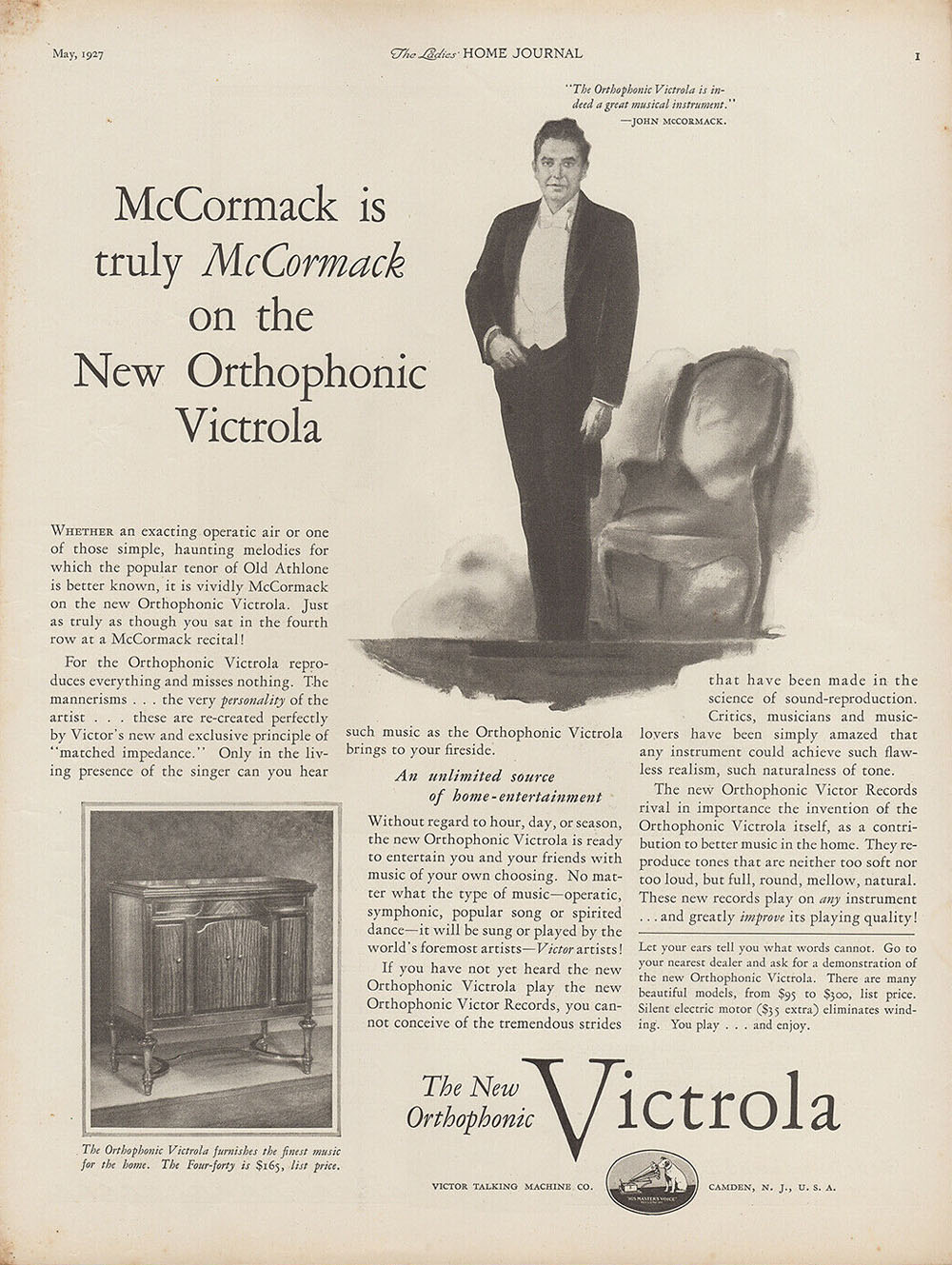
McCormack is truly McCormack
on the New Orthophonic Victrola. The Ladies' Home Journal,
May 1927.
Although not part of the "Both
are..." advertising campaign, the following ad likewise states
the same equation of record and artist: "A Victor Record of Caruso
is Caruso himself."
"With a Victrola and Victor Records
you hear the greatest artists just as they wish to be heard."
The Ladies' Home Journal, June 1920.
Phonographia
|
